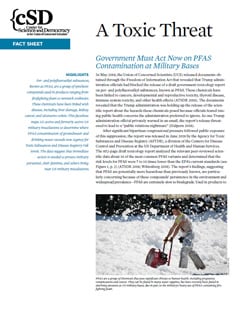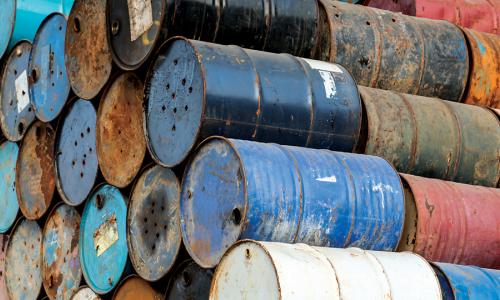Hundreds of sites across the US, including military facilities where thousands of service members and their families live and work, have been contaminated for years with a class of toxic chemicals known as PFAS (per- and polyfluoroalkyl substances). PFAS exposure is associated with a host of health impacts, including various cancers and reproductive and immune system problems.
Documents obtained by UCS through Freedom of Information Act request this spring showed that the Trump Administration had suppressed a government assessment on the health effects of PFAS, calling it a “public relations nightmare.” Soon after, public pressure and a bipartisan congressional effort led to the release of the study in June which revealed that PFAS exposure could be dangerous at levels EPA considers safe. The 2018 assessment by the Agency for Toxic Substances and Disease Registry (ATSDR), a division of the Centers for Disease Control and Prevention, finds that the safe level of PFAS exposure is 7 to 10 times lower than the EPA’s non-enforceable drinking water advisory.
The Center for Science and Democracy has mapped 131 military sites at which PFAS contamination has been found in drinking water or groundwater. All but one of them exceeded the ATSDR safety threshold of 11 parts per trillion. Nearly two-thirds were more than 100 times higher than the safe level. Using data from the US Census Bureau's 2014 American Community Survey, we determined that more than 6 million Americans lived within a three-mile radius of one of these sites in 2017.



